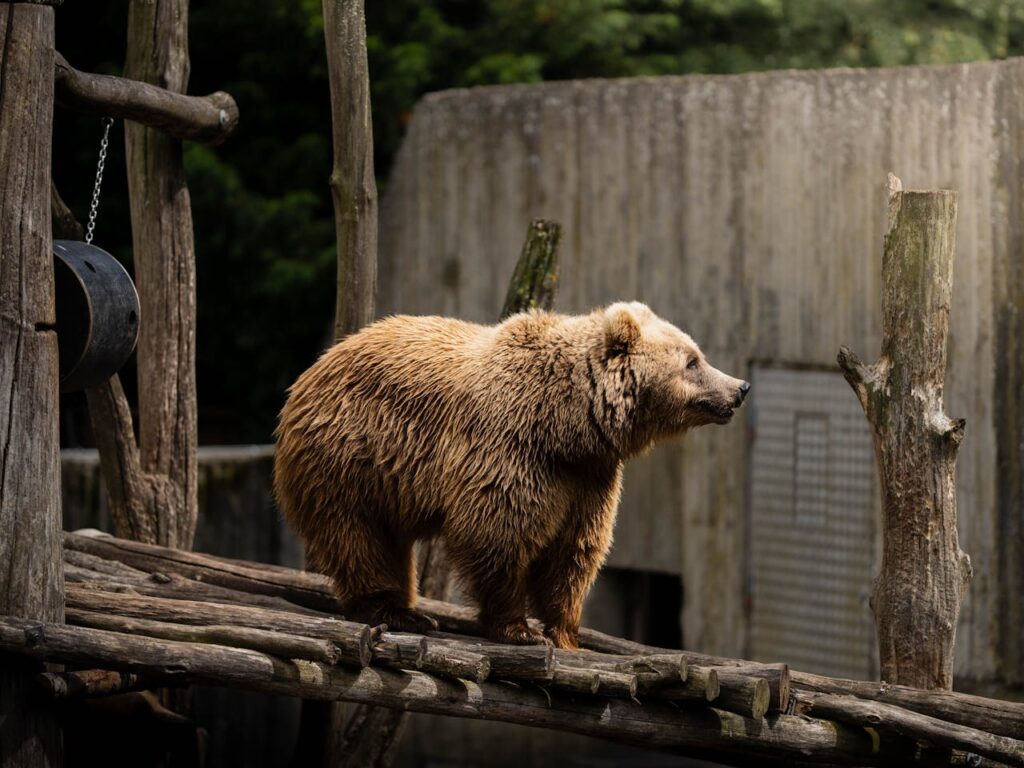Meet Montana’s State Animal: The Majestic Grizzly Bear
Montana, a state famous for its expansive wilderness, rugged mountains, and pristine national parks, needed a state animal that reflected its wild spirit. In 1983, the grizzly was officially designated as Montana’s state animal, an emblem of strength, resilience, and the untamed natural beauty of the region.
Why the Grizzly Bear Was Chosen
Montana’s landscapes provide crucial habitat for one of the last remaining strongholds of the grizzly bear in the lower 48 states. With its rich forests, dense shrublands, and alpine meadows, the state supports hundreds of bears across areas like Glacier National Park and the Greater Yellowstone Ecosystem. The grizzly is also a keystone species here; it impacts the entire food web, from predators to plants, just by going about its daily life.
Montanans value wildlife, and the grizzly has long evoked fascination and respect, not only for its role in the ecosystem but also for its cultural significance to Native American tribes, who view the bear as a spiritual guide and symbol of courage.
The Grizzly Bear at a Glance
| Trait | Description |
|---|---|
| Scientific Name | Ursus arctos horribilis |
| Size | Up to 8 feet tall when standing; males can weigh 400–790 pounds |
| Habitat | Mountain forests, alpine tundra, river valleys across western Montana |
| Diet | Omnivorous: plants, berries, roots, insects, fish, and even large mammals |
| Status | Threatened (lower 48 states, under the U.S. Endangered Species Act) |
Bear Behavior: More Than Just a Powerful Predator
Although their sheer size and muscular build make grizzlies appear intimidating, they’re incredibly versatile and intelligent animals. Grizzlies are expert foragers who spend much of the spring and summer fattening up for their winter hibernation. They use strong claws and powerful shoulders to dig for roots, tear apart logs for insects, or hunt small mammals. And yes, they’re also proficient swimmers and occasional fishers, snatching salmon or trout from rivers with remarkable skill.
One of the most intriguing features of the grizzly is its seasonal hibernation. Grizzlies don’t truly “sleep” through winter; they enter a state called torpor, where their heart rate drops, body temperature falls slightly, and metabolism slows. Females even give birth during hibernation, nursing their cubs in the safety and quiet of a snow-covered den.
Where to Spot Grizzlies in Montana
The best-known habitats for Montana’s grizzlies include:
- Glacier National Park: One of the most densely populated grizzly bear regions in the U.S.
- Bob Marshall Wilderness Complex: Remote and rugged, this region offers prime bear territory.
- Greater Yellowstone Ecosystem: Encompassing parts of southern Montana, these areas host dozens of monitored bear populations.
Always remember: if you’re exploring Montana’s bear country, follow responsible wildlife viewing practices. Stay at least 100 yards away, carry bear spray, make noise while hiking, and store food securely. Respect ensures safety for both you and the bears.
Conservation Efforts and Scientific Management
Over the last several decades, grizzly bear numbers in Montana have recovered slowly, thanks to rigorous conservation efforts and protective laws. Organizations like the U.S. Fish and Wildlife Service and National Park Service have worked to maintain bear habitats, reduce human-bear conflict, and monitor bear population health through GPS collars and DNA studies.
Interestingly, grizzlies are now being studied for their unique physiology: researchers are exploring how they manage diabetes-like conditions during hibernation, how their cardiovascular systems adapt, and how females sustain pregnancies during seasonal dormancy. These biological marvels offer insights into human medicine, too (Nature Scientific Reports).
More Than a Symbol: What the Grizzly Means to Montanans
In many ways, the grizzly bear is more than just Montana’s state animal. It represents a commitment to wildness, to resilience, and to ecological balance. For ranchers, hikers, biologists, and tribes alike, the bear evokes caution and awe—an invitation to coexist with nature on its own terms.
Whether seen lumbering across a ridgeline or heard softly moving through underbrush, the grizzly remains a powerful reminder of what Montana strives to preserve: wild places, powerful species, and a legacy of living with nature rather than apart from it.
Related Questions
Are grizzly bears only found in Montana?
No, grizzlies are also found in Wyoming, Idaho, Alaska, and parts of Canada, but Montana has one of the largest populations in the contiguous United States.
Is it safe to camp in bear country in Montana?
Yes, with precautions. Use bear-proof containers, avoid cooking near your tent, and always carry bear spray. Follow all local forest and park guidelines.
When was the grizzly bear listed as Montana’s state animal?
It was officially designated in 1983 by the Montana State Legislature due to its ecological and cultural importance.
Can you hunt grizzly bears in Montana?
No. Grizzlies are currently protected under the federal Endangered Species Act in the lower 48 states, including Montana.
How many grizzly bears are in Montana today?
Estimates vary, but there are roughly 1,000–1,200 grizzlies in the state today, primarily in and around national parks and wilderness areas.


